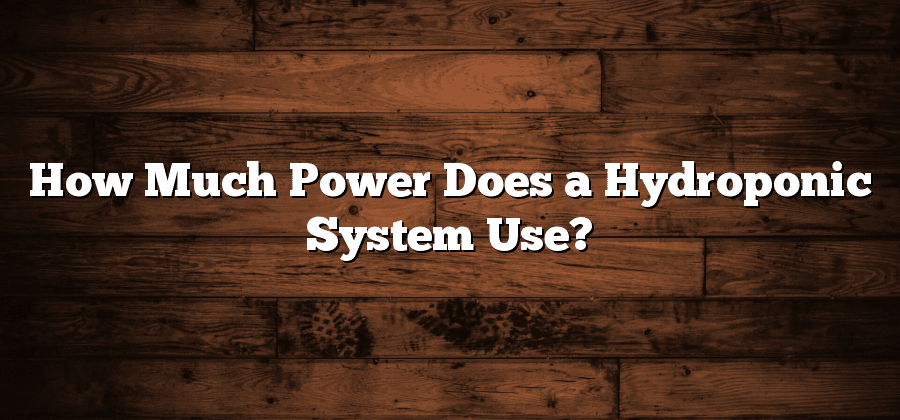Understanding Hydroponic Systems
Hydroponic systems have gained popularity in recent years as an innovative method of growing plants without soil. Instead, these systems rely on a nutrient-rich solution that is carefully balanced to provide the necessary nutrients for plant growth. This solution is continuously circulated, ensuring that the plants receive a constant supply of water and nutrients. By eliminating the need for soil, hydroponic systems offer several advantages over traditional soil-based gardening, such as increased control over plant growth, improved water efficiency, and the ability to grow crops in areas with limited space.
One of the key benefits of hydroponic systems is the level of control they provide over the growing conditions. The nutrient solution can be precisely tailored to meet the specific needs of each type of plant, ensuring optimal growth and maximizing yields. Additionally, the controlled environment of hydroponics allows for year-round cultivation, eliminating the limitations imposed by seasonal changes. This level of control also extends to factors such as temperature, humidity, and lighting, allowing growers to create the perfect conditions for their plants. Overall, understanding hydroponic systems provides a glimpse into the future of sustainable and efficient agriculture.
The Basics of Power Consumption
Hydroponic systems require power in order to function effectively and efficiently. Power consumption in these systems can vary depending on the size and complexity of the setup, as well as the types of equipment and lighting being used. Understanding the basics of power consumption is crucial for hydroponic growers to make informed decisions and optimize energy usage.
The main components of a hydroponic system that consume power include pumps, fans, heaters, and lighting. Pumps are used to circulate the nutrient solution throughout the system, ensuring proper delivery to the plant roots. Fans help with air circulation and temperature control, while heaters are utilized to maintain an ideal growing environment. Lighting, on the other hand, plays a crucial role in providing the necessary spectrum and intensity of light for plant growth. Each of these components has its own power requirements, and it’s important to consider both the individual and collective power consumption when designing and operating a hydroponic system.
Factors Affecting Power Usage in Hydroponic Systems
One of the key factors affecting power usage in hydroponic systems is the type of lighting used. Different types of lighting, such as fluorescent, high-pressure sodium, and LED lights, consume varying amounts of electricity. Fluorescent lights are generally more energy-efficient than other types, but they may not provide the same intensity of light as LED or high-pressure sodium lights. It is important for hydroponic growers to carefully consider the specific lighting needs of their plants and balance these needs with energy consumption.
Another factor that affects power usage in hydroponics is the size and scale of the system. Larger hydroponic setups generally require more power to operate, as they may have more pumps, fans, and lights. On the other hand, small-scale hydroponic systems can be designed with energy-efficient components and technologies to minimize power consumption. Growers should carefully evaluate their power requirements and consider the size and scale of their hydroponic operation to optimize energy efficiency.
Evaluating Energy Efficiency in Hydroponics
One important aspect of optimizing hydroponic systems is evaluating their energy efficiency. By assessing the energy efficiency of a hydroponic system, growers can determine the effectiveness and sustainability of their operations. Evaluating energy efficiency involves analyzing the power consumption of various components in the system, such as lighting, ventilation, and water pumps, and identifying opportunities for improvement.
Lighting plays a crucial role in hydroponics, as it serves as a substitute for natural sunlight. Different types of lighting fixtures are commonly used in hydroponic setups, including fluorescent, high-intensity discharge (HID), and light-emitting diode (LED) lights. Each type of lighting has its own energy consumption characteristics and efficiency levels. LED lights, for example, are known for their high energy efficiency and long lifespan, making them a popular choice among hydroponic growers. However, evaluating energy efficiency in hydroponics requires considering not only the type of lighting used but also factors like light intensity, photoperiod duration, and light distribution within the grow space.
Types of Lighting and Their Energy Consumption
One of the key factors to consider when evaluating the energy efficiency of hydroponic systems is the type of lighting used. Different types of lighting have varying energy consumption levels, which can greatly impact the operational costs of the system. Here, we will explore some common types of lighting in hydroponics and their corresponding energy usage.
LED lighting has rapidly gained popularity in the hydroponics industry due to its high energy efficiency. LED lights have a low wattage consumption while providing sufficient light intensity for plant growth. Compared to other lighting options, such as fluorescent or high-intensity discharge (HID) lights, LEDs consume significantly less energy. This makes them a cost-effective choice for hydroponic growers, as they can reduce electricity expenses while still promoting healthy plant development. Additionally, LED lights have a longer lifespan, minimizing the need for frequent bulb replacements and further contributing to energy efficiency.






